From the sun-dappled shallows to the midnight zones over 1,000 meters down, hammerhead sharks inhabit an impressive range of ocean habitats.
Their global distribution and behavioral plasticity reveal complex migration patterns and habitat preferences that ensure their survival across changing conditions.
This article explores how geographical location and coastal features influence hammerhead sharks, along with conservation challenges and tourist opportunities to safely view these iconic animals.
By understanding hammerhead habitat use and developing protected areas, we can support population recovery for these vital apex predators.
When exploring hammerhead hotspots, tourists must follow ethical guidelines to prevent disturbance. Through such efforts, we can sustain hammerhead sharks and the vibrant marine web they help regulate.
The Diversity of Hammerhead Habitats
The year-round habitats of hammerhead sharks have fascinating variations. Species and geographical locations influence them.
Hammerhead sharks live and move in different places like coasts, open waters, bays and estuaries.
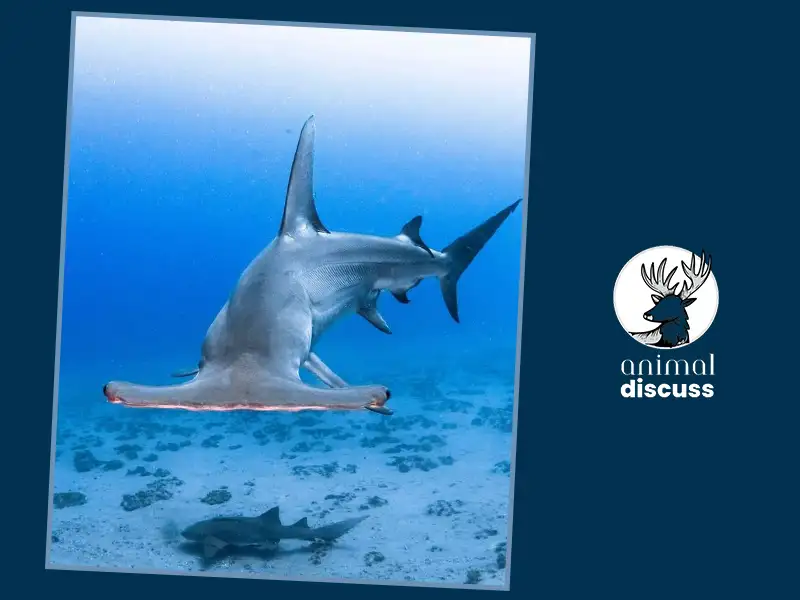
These places can change a lot and movements align with their feeding behaviors, social interactions and temperature preferences. They showcase the adaptability and complexity of their habitat utilization and migration strategies.
Now, the geographical distribution of various hammerhead species unveils a diverse and extensive range across the globe, each species exhibiting distinct preferences throughout the year. Have a look –
The Great Hammerhead Shark
Imagine the sun casting its golden hues upon the coastal-pelagic waters, where the great hammerhead roams.
This majestic creature, spanning tropical and warm temperate waters between 40°N and 35°S latitude, finds solace in the shallow coastal realms, dancing along the continental shelves and exploring depths of up to 80 meters.
It’s a spectacle to witness as they effortlessly navigate these watery corridors, their silhouette cutting through the crystal-clear depths.
The Scalloped Hammerhead Shark
Venture further into the tropical and warm temperate waters and you’ll encounter the versatile scalloped hammerhead. Unlike its cousins, this marvel frequents a myriad of coastal habitats.
From estuaries to vibrant reefs, it gracefully glides through the depths, delving into the mysteries of the ocean reaching impressive depths of 250 meters.
Picture it, silhouetted against the intricate backdrop of coral reefs, a testament to its adaptability and exploration.
The Bonnethead Shark
In the western Atlantic Ocean and the eastern Pacific Ocean, the bonnethead reigns in the shallows.
This fascinating species weaves through shallow coastal waters, exploring estuaries and bays with an occasional visit to the serene mangrove forests.
Its presence, a vital thread in the rich tapestry of these coastal ecosystems, emphasizes the interconnectedness of life beneath the waves.
The Smooth Hammerhead Shark
Similar to its great cousin, the smooth hammerhead shares its affinity for coastal-pelagic zones.
In tropical and warm temperate waters, between 40°N and 35°S latitude, it roams these watery expanses, navigating depths of about 250 meters.
Picture the grace of its movement as it ventures through these coastal realms, an embodiment of the beauty that thrives within our oceans.
The Whitefin Hammerhead Shark
Journey to the western Pacific Ocean and the eastern Pacific Ocean and you’ll discover the enigmatic whitefin hammerhead.
This oceanic wanderer delves into deep waters, plunging to astounding depths of 1,000 meters.
Envision the depths it explores, a realm of mystery and wonder hidden from the surface – a testament to the adaptability and resilience of this incredible species.
Other Hammerhead Varieties
Across the Indo-West Pacific Ocean and the western Atlantic Ocean, species like the scoophead, winghead, Japanese and bigeye hammerheads paint a vivid tapestry of diversity.
Their habitats span coastal-pelagic zones to the abyssal depths, showcasing their resilience and adaptability in the ever-changing oceanic landscapes.
Each hammerhead’s journey is not confined by geographical boundaries. They transcend, exploring, foraging and migrating, responding to the nuanced whispers of their environment.
Coastal Features that Attract Hammerheads to Particular Regions
The coastal features that attract hammerhead sharks to specific regions are varied and essential for their survival. These features play a pivotal role in shaping their habitats and influencing their behavior and presence in these areas.
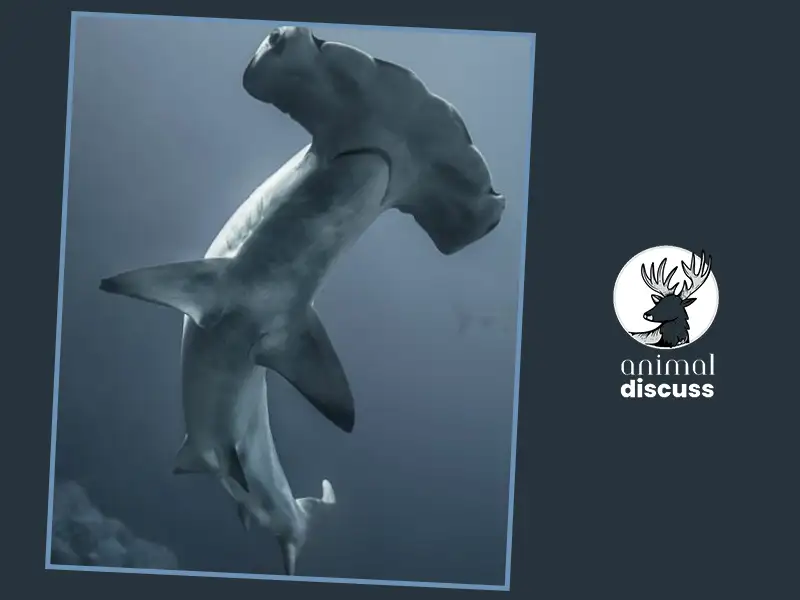
Let’s see where they like it and why it’s crucial to their habitat choices –
Warm Water
Hammerhead sharks are chill by nature—they’re ectothermic, depending on outside warmth to stay cozy.
They dig tropical and warm temperate waters, around 15°C to 30°C. Coastal spots with these temps are their sweet spots, keeping their cool and metabolism in check.
Unusually warm ocean temperatures, such as those in the Southern California Bight, entice these sharks northward, making their presence more prominent in regions like Southern California.
Access to these regions ensures their ability to regulate body temperature effectively, supporting their survival and reproductive capabilities.
Productive Waters
These sharks are drawn to areas of high productivity, such as the central Baja Peninsula, where they feast on abundant sardines and anchovies, indicative of their preference for nutrient-rich and productive waters.
Such rich feeding grounds are essential for maintaining healthy populations and supporting energy demands.
Oceanic Structures
Hammerhead sharks exhibit a penchant for clustering around oceanic structures like seamounts or flats.
These areas boast rich biodiversity and nutrients, creating favorable conditions for a diverse array of marine life, thereby attracting these apex predators.
Such locations act as feeding and breeding grounds, offering a diverse range of prey species and contributing significantly to the sharks’ life cycles.
Nutrient-Rich Waters
The Earth’s magnetic field and magnetic fields accumulated on the ocean floor serve as guiding routes for hammerhead sharks, directing them toward nutrient-rich waters crucial for sustaining their food sources and supporting their survival.
These areas support a thriving marine ecosystem, ensuring an ample supply of prey species vital for the sharks’ sustenance.
Shallow and Coastal Environments
Particularly significant for younger hammerhead individuals, coastal waters serve as essential habitats during the initial years of their lives.
They exhibit a daily movement pattern, navigating from offshore hunting grounds to island shelves, seamounts, bays, estuaries and reefs.
Females form schools for social interaction during the day, indicating the importance of these diverse coastal habitats for their activities and development.
Access to these diverse habitats is vital for the successful development and survival of young hammerheads, contributing significantly to future populations.
So, the combination of food availability, suitable water conditions, shelter and breeding opportunities in coastal areas acts as a magnet for hammerhead sharks.
How Did Human Activities Impact Hammerhead Nesting Grounds in Different Habitats?
The home territories of hammerhead sharks have been shrinking, sounding alarm bells across various regions. Though there isn’t a complete tally of these magnificent creatures, reports and studies paint a grim picture of their decline.
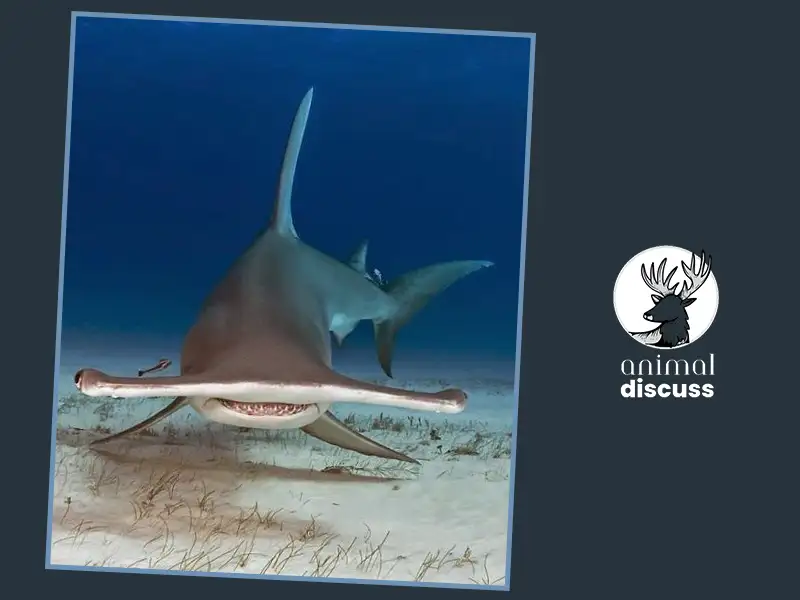
Here are our findings by location, have a look –
Northwest and Western Central Atlantic
A report from 2009 by the International Union for Conservation of Nature (IUCN) shows an 89% decline in hammerhead shark populations since 1986 in this region – a staggering drop within a relatively short span.
Mediterranean Sea
The same report highlighted an even bleaker scenario—a shocking plunge of over 99% in hammerhead shark populations since the early 19th century, signaling a devastating decline over a long period in the Mediterranean.
South Africa
Studies from South Africa echoed these concerns, revealing troubling numbers.
The scalloped hammerhead population decreased by 64% and the great hammerhead population by 79% from 1978 to 2003—a significant loss observed within a few decades.
Eastern Atlantic
Further studies reported an 80% decline in the great hammerhead population in the Eastern Atlantic from 1970 to 2005, showcasing a consistent downward trend over several decades.
What’s causing this distressing decline? Habitat loss stands tall as a primary culprit. Overfishing, habitat degradation and illegal trade have significantly impacted the spaces where these sharks live and thrive.
Adaptations of Hammerhead Sharks Showcases in Response to Varying Salinity Levels of Different Habitat?
Hammerhead sharks are incredible creatures that ace the art of adapting to their ever-changing homes. One standout skill they flaunt is their knack for managing saltiness levels in their body, known as osmoregulation.
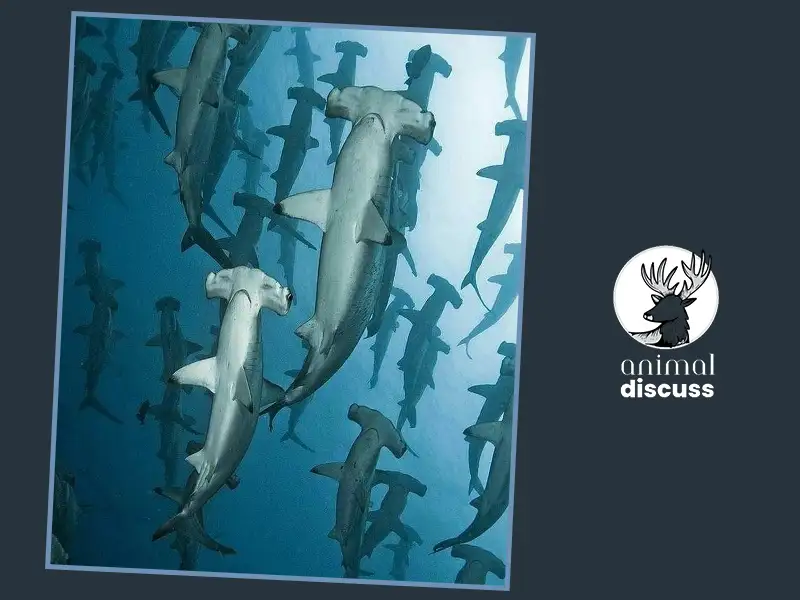
This nifty ability helps them balance water and salt, especially when they swim between habitats with varying saltiness. Let’s explore how they do it –
Kidney Magic
These sharks rock kidneys that are like adaptable wizards. When they paddle through freshwater, their kidneys churn out lots of watery pee to ditch extra water and hold onto precious salt.
But when they dive into saltwater, their kidneys craft just a bit of super-concentrated pee to save water and wave goodbye to excess salt.
Rectal Gland Marvel
Ever heard of a shark’s secret salty stash?
Yep, hammerheads have a special gland that whips up a salty potion and sends it into their belly.
This slick move helps them boot out extra salt from their blood, keeping their pressure in check. And this gland gets extra busy when they’re doing their swim in saltier waters.
Gill Tricks
These sharks have gills that are real multitaskers. Inside, there are special cells called chloride cells. They’re like little gatekeepers that handle water and salt.
When the sharks cruise in freshwater, these cells soak up salt and release water, but when they’re in the salty sea, they flip the script and let go of salt while slurping up water.
These adaptations aren’t just cool party tricks; they’re survival superpowers. They let hammerhead sharks thrive in different places with all sorts of saltiness levels. And that’s just one part of their bag of tricks!
The Impact of Location on Hammerhead Shark Life
The location of hammerhead sharks can have a significant impact on their life, as different regions have different environmental conditions, threats and opportunities for these amazing animals.
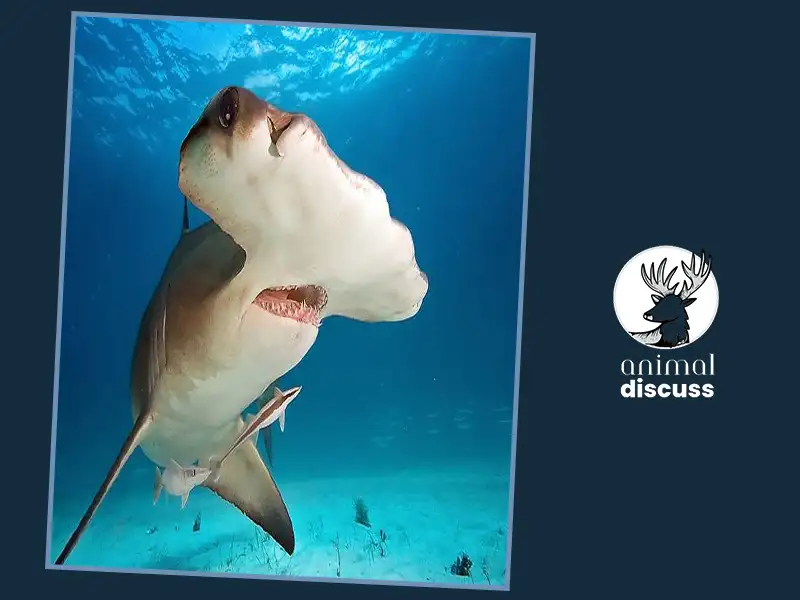
Here are some of the ways that location affects hammerhead sharks and their survival –
Food Availability
Food availability stands as a pivotal factor profoundly influencing the habitat choices of hammerhead sharks.
These apex predators exhibit an opportunistic feeding behavior, consuming a diverse array of prey, including fish, crustaceans and cephalopods.
Their inclination towards areas rich in preferred prey, such as coastal bays, estuaries and coral reefs, emphasizes the significance of food abundance in shaping their habitat preferences.
For instance, a rise in salinity due to drought in a coastal bay can drive away fish and other prey, prompting hammerhead sharks to seek alternative habitats with lower salinity and greater prey abundance.
While great hammerhead sharks are found in warm temperate and tropical waters globally, their prevalence is notably higher in regions abundant with their preferred prey.
Areas like the coastlines of Africa and South America serve as hotspots due to the high abundance of prey, shaping the distribution of these sharks’ populations.
Forage Favored: Hammerhead sharks aren’t picky about where they hang out—they choose their spots based on their dinner plans. They’ve got three dining styles, each with its favorite hangout.
Some hammerheads are sneaky eaters. They dig shallow, murky spots packed with rocks, reefs and plants—a perfect hideout for their prey. These sharks wait patiently, ready to pounce on the abundance of critters hiding in these cozy spots.
Others prefer the open ocean’s deeper waters. These pelagic hunters go after schools of fish and squid, cruising through the vastness of the open sea for their meals. They’re all about the thrill of the chase!
Then there are the cooperative hunters. They thrive in snug spots like estuaries and bays. Here, teamwork is the name of the game—they coordinate their moves to snag their prey effectively.
Hammerhead sharks aren’t one-trick ponies when it comes to food. They’ve got a range of strategies, from sneaky ambushes in shallow waters to chasing down meals in the wide open.
And these strategies shape where they choose to hang out.
Reproductive Habitat Selection
Reproduction and nurturing grounds are pivotal in the life of hammerhead sharks, guiding them to specific coastal spots where they can mate, give birth and raise their young.
These safe havens are crucial for the little ones’ growth, ensuring the long-term survival of the hammerhead shark gang.
Lady hammerhead sharks have a keen eye for special spots to start their families.
They fancy sheltered, shallow nooks like bays, estuaries and mangrove forests for their romantic rendezvous and baby birthing.
Why these spots?
Predator-Free Zone: These shallow coastal hideouts provide a haven for baby hammerheads, keeping them safe from big baddies lurking in deeper waters. The mix of vegetation and structures here acts like a shield, giving the little ones a hideout to stay incognito.
For instance, bonnethead sharks make a seasonal move from deep waters to shallow bays and estuaries in spring and summer. These spots are like a cozy nursery for baby sharks, with food aplenty for their survival.
Buffet of Food: These cozy coastal waters are like an all-you-can-eat buffet for young hammerhead sharks. They’re packed with all sorts of yummies—small fish, crustaceans and squid—perfect for growing strong and healthy.
Growing Up Zone: These shallow spots aren’t just for romance; they’re where baby hammerheads learn the ropes. With plenty of food and safe waters, they can practice being top-notch hunters and escape artists before venturing into the big leagues.
These safe zones aren’t just a quick stop—they’re the epicenter of the hammerhead life cycle. Little sharks spend their early days here, learning the ropes before heading into deeper waters as they grow.
Even when they’re all grown up, adult hammerheads swing back to these spots to keep the family tradition going.
Migration Patterns – Navigating Based on Location
Have a look at the usual habitat and migratory patterns
| Species | Usual Habitat (Area Type and Name) | Migration |
|---|---|---|
| Great hammerhead shark (Sphyrna mokarran) | Coastal waters of the Indo-West Pacific: Australia, Indonesia, Philippines, India, East Africa, Red Sea. | Seasonal migrations: Summer: higher latitude waters (e.g., California, Galapagos Islands) Winter: lower latitude waters (e.g., Australia) |
| Scalloped hammerhead shark (Sphyrna lewini) | Coastal and continental shelf waters worldwide: Atlantic Ocean: North Carolina to Brazil; Gulf of Mexico; Caribbean Sea; West Africa Pacific Ocean: California to Chile; Japan to Australia Indian Ocean: South Africa to India | Extensive seasonal migrations Summer: higher latitude waters (e.g., California, Galapagos Islands, Japan) Winter: lower latitude waters (e.g., Australia, Hawaii) |
| Bonnethead shark (Sphyrna tiburo) | Coastal and shallow waters of the western Atlantic Ocean: North Carolina to Brazil; Gulf of Mexico; Caribbean Sea | Limited seasonal migrations Summer: move northward Winter: move southward Some populations remain resident |
| Smooth hammerhead shark (Sphyrna zygaena) | Coastal and continental shelf waters worldwide. Atlantic Ocean: North Carolina to Brazil; Gulf of Mexico; Caribbean Sea; West Africa Pacific Ocean: California to Chile; Japan to Australia Indian Ocean: South Africa to India | Seasonal migrations: Summer: higher latitude waters (e.g., California, Galapagos Islands, Japan) Winter: lower latitude waters (e.g., Australia, Hawaii) |
| Whitefin hammerhead shark (Sphyrna lewini) | Coastal and continental shelf waters worldwide: Atlantic Ocean: North Carolina to Brazil; Gulf of Mexico; Caribbean Sea; West Africa Pacific Ocean: California to Chile; Japan to Australia Indian Ocean: South Africa to India | Extensive seasonal migrations: Summer: higher latitude waters (e.g., California, Galapagos Islands, Japan) Winter: lower latitude waters (e.g., Australia, Hawaii) |
| Scoophead hammerhead shark (Sphyrna media) | Coastal and continental shelf waters of the Indo-Pacific region: Australia, Indonesia, Philippines, India, East Africa, Red Sea | Limited seasonal migrations: May move closer to shore in summer and further offshore in winter |
| Winghead hammerhead shark (Sphyrna blochii) | Coastal and continental shelf waters of the Indo-Pacific region: Australia, Indonesia, Philippines, India, East Africa, Red Sea | Limited seasonal movements: May move closer to shore in summer and further offshore in winter |
| Japanese hammerhead shark (Sphyrna pulchra) | Coastal and continental shelf waters of the Indo-Pacific region: Japan, Korea, China, Taiwan, Philippines | Limited seasonal movements: May move closer to shore in summer and further offshore in winter |
| Bigeye hammerhead shark (Sphyrna bigelowi) | Deep-water environments (continental slopes and oceanic islands) Atlantic Ocean: North Carolina to Brazil; Gulf of Mexico; Caribbean Sea; West Africa Pacific Ocean: California to Chile; Japan to Australia Indian Ocean: South Africa to India | Limited seasonal movements: May move closer to shore in summer and further offshore in winter |
Tourist Travel Guide – Top Hammerhead Shark Destinations
Let’s explore some of the world’s premier destinations for exhilarating hammerhead encounters and the best ways to relish these experiences –
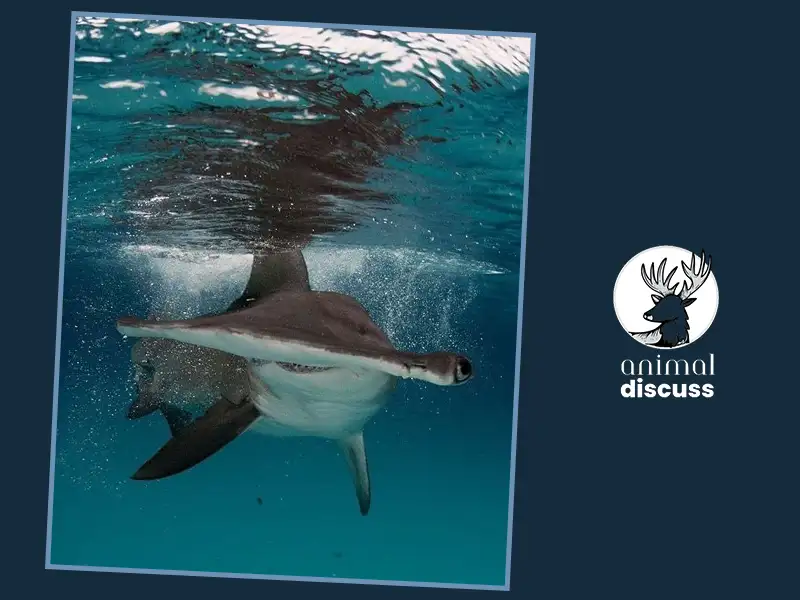
1. Cocos Island, Costa Rica: Dive into the Depths
An isolated volcanic island in the Pacific, Cocos Island is a haven for various shark species, including hammerheads, tiger sharks and whitetip sharks.
How to Enjoy: Embark on a liveaboard diving expedition to this remote island, where an array of marine wonders awaits. A 7-10 day excursion offers access to hammerheads, tiger sharks and playful dolphins.
Best Time: December to April.
2. Malpelo Island, Colombia: Remote Diving Paradise
Another remote island off Colombia’s coast, Malpelo Island, a UNESCO World Heritage Site, boasts a pristine marine habitat frequented by hammerheads, whale sharks and manta rays.
How to Enjoy: Traverse on liveaboard diving trips spanning 7-10 days, immersing yourself in awe-inspiring encounters with hammerheads, gentle whale sharks and majestic manta rays.
Best Time: January to May.
3. Galapagos Islands, Ecuador: Underwater Marvels
This volcanic archipelago is renowned for its unique wildlife, including the captivating presence of hammerhead sharks.
How to Enjoy: Dive or snorkel in the Galapagos to witness hammerheads in their natural habitat. Opt for liveaboard trips to explore hidden corners or land-based tours for boat sightings.
Best Time: June to November.
4. Bimini, Bahamas: Shark Spectacle
The Bimini islands are a diver’s paradise, attracting enthusiasts eager to witness the grace of hammerhead sharks amidst crystal-clear waters.
How to Enjoy: Delve into the depths through diving, snorkeling, or cage diving. Dive centers curate guided expeditions to renowned hammerhead spots.
Best Time: December to April.
5. Tiger Beach, Bahamas: Tiger Sharks and Beyond
Famous for tiger sharks, Tiger Beach is also a notable site for encountering hammerheads, set against the picturesque backdrop of Grand Bahama Island.
How to Enjoy: While tiger sharks take center stage, hammerheads make regular appearances. Join dive trips led by seasoned guides for an unforgettable experience.
Best Time: December to April.
6. Rangiroa Atoll, French Polynesia: Underwater Extravaganza
The largest atoll in French Polynesia, Rangiroa, offers a glimpse into a vibrant marine world teeming with hammerheads, manta rays and playful dolphins.
How to Enjoy: Dive or snorkel to witness hammerheads, graceful manta rays and playful dolphins. Luxuriate in liveaboard expeditions or explore from land-based retreats.
Best Time: July to November.
7. Sipadan Island, Malaysia: Marine Enchantment
Off the Borneo coast, Sipadan Island invites divers and snorkelers to explore its underwater wonders, where hammerheads contribute to the diverse marine panorama.
How to Enjoy: Dive into the mesmerizing marine life around Sipadan, including captivating encounters with hammerheads. Ensure advanced permits for this exclusive diving experience.
Best Time: April to June.
8. Tubbataha Reefs Natural Park, Philippines: Pristine Wilderness
A UNESCO gem in the Sulu Sea, this park is a sanctuary for sharks, including hammerheads, thriving amidst untouched marine landscapes.
How to Enjoy: Immerse yourself in the remote beauty of Tubbataha through liveaboard diving trips. Dive among hammerheads, gentle whale sharks and vibrant coral reefs.
Best Time: March to May.
9. Wakatobi National Park, Indonesia: Sublime Underwater Explorations
In the southeastern part of Indonesia, Wakatobi National Park’s stunning coral reefs are home to various marine species, including the elusive hammerhead shark.
How to Enjoy: Dive or snorkel in Wakatobi National Park, famed for hammerhead sightings. Choose liveaboard trips for secluded reefs or land-based resorts for accessible dive sites.
Best Time: April to June.
10. Southern California, USA: Coastal Encounters
The coastal waters off Catalina Island and San Clemente Island are habitats where encounters with hammerhead sharks can occur, adding to the region’s diverse marine life.
How to Enjoy: Dive or snorkel off the Southern California coast. Dive centers organize guided adventures to known aggregation spots, while boat tours offer surface shark sightings.
Best Time: July to September.
Important Guidelines for a Memorable Experience
- Choose reputable dive operators prioritizing responsible tourism and safety.
- Respect these incredible animals and their habitat by maintaining a safe distance and avoiding any disturbance.
- Stay aware of your surroundings and dive within your skill limits.
- Prepare for potential seasickness, especially in areas with rough waters.
- Pack essential gear such as wetsuits, masks, fins and snorkels for an optimal experience.
By adhering to these recommendations, you’ll ensure a safe, enjoyable and truly unforgettable encounter with these awe-inspiring creatures of the deep.
How Can Tourists Contribute to Shark Conservation Initiatives in These Habitats?
Travelers exploring the world’s oceans and encountering hammerhead sharks can actively participate in vital shark conservation efforts. Here are impactful ways to contribute to safeguarding these remarkable creatures—
01. Advocate Sustainable Practices: Embrace and endorse sustainable fishing methods while responsibly managing and disposing of marine debris.
Reducing plastic pollution is key to preserving the marine ecosystem that hammerhead sharks call home.
02. Engage in Citizen Science Initiatives: Participate in citizen science programs focused on hammerhead shark research.
Your observations and contributions to data collection play a crucial role in understanding and conserving these magnificent creatures.
03. Support Conservation Organizations: Back shark conservation groups by volunteering your time, making donations, or actively engaging in their initiatives. Your support directly aids in implementing protective measures for hammerhead sharks and their habitats.
04. Drive Awareness and Advocacy: Utilize social media platforms and engage in educational outreach to amplify the importance of shark conservation.
Advocate for robust measures to protect hammerhead sharks, fostering a deeper understanding and respect for these marine wonders.
Enjoy your encounters with these awe-inspiring creatures and let your journey be a testament to responsible and respectful exploration of our oceans.
Hammerhead Conservation Challenges
Hammerhead sharks face several conservation challenges that are specific to their habitats. These include habitat degradation and loss due to coastal urbanization, mangrove destruction, and coral reef deterioration.
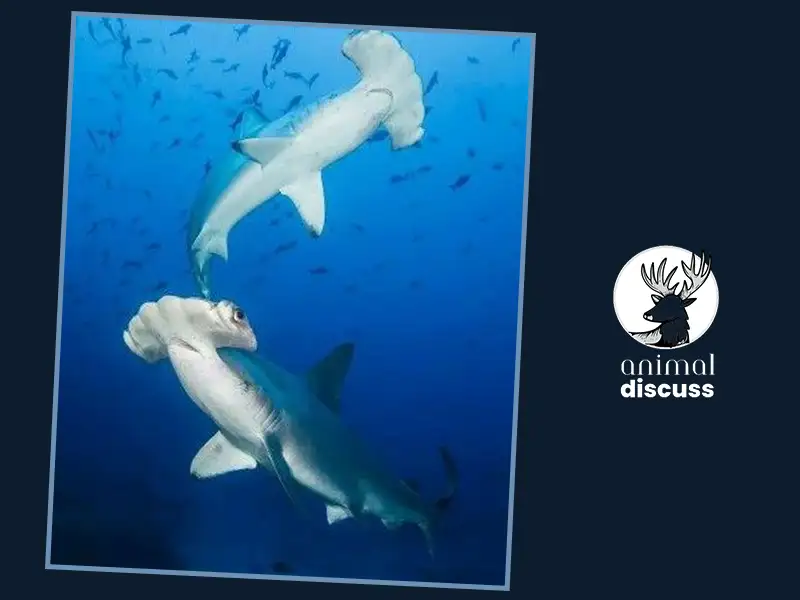
Overfishing and the relentless pursuit of shark fins pose formidable threats to hammerhead sharks. Climate change-induced ocean temperature fluctuations and prey disruptions further undermine hammerhead shark populations.
Human activities, including incidental catch and pollution intensify the challenges faced by declining hammerhead shark populations.
Certain regions, like the Indo-Pacific and the Atlantic Ocean, encounter heightened conservation struggles concerning hammerhead sharks.
Habitat Connectivity
Preserving interconnected habitats is crucial for hammerhead migration and survival. Hammerhead sharks exhibit more variable migratory patterns than expected.
Some prefer to stay in coastal areas, while others opt for deeper waters.
This behavioral plasticity of movement and habitat use might be linked to the persistence of hammerhead sharks in various regions. Therefore, understanding these movement patterns and habitat use is vital for successful conservation efforts.
Protected Areas and Marine Reserves
Establishing protected zones for hammerhead habitats is significant for several reasons. These zones offer a seasonal reduction in fishing pressure for this species.
For instance, the Mid-Atlantic Shark Area, a 7-month per year bottom-longline fishery closure, has a high overlap with the winter core area used by hammerhead sharks.
This indicates that the area closure offers seasonal protection for this species. Successful marine reserves have a positive impact on hammerhead populations.
They increase catches where fishing is still allowed, which is good news for the conservation of these species.
The consistency in the use of summer and winter core areas by hammerhead sharks suggests that the coastal waters of certain regions could be considered for Essential Fish Habitat designation for this species.
This would further aid in the conservation of these magnificent creatures3.
Final Thoughts
Hammerhead sharks have navigated Earth’s waters for over 20 million years, adapting to shoals and seamounts, bays and blue horizons across tropical latitudes.
While facing growing threats like overfishing, climate shifts, and habitat loss, these resilient creatures still roam significant swaths of our oceans.
If hammerhead sharks thrive, so too will the many species interlinked in the habitats they help balance. Our actions today write the next chapter for these captivating marine architects.
References
- https://blog.padi.com/diving-with-hammerhead-sharks-best-destinations/
- https://www.originaldiving.com/blog/top-places-to-dive-with-hammerheads
- https://www.liveaboard.com/diving/marine-life/diving-with-hammerhead-sharks
- https://www.bluewaterdivetravel.com/best-hammerhead-diving
- https://www.frontiersin.org/articles/10.3389/fmars.2017.00003
- https://travel-shark.com/shark-diving-with-great-hammerheads/

